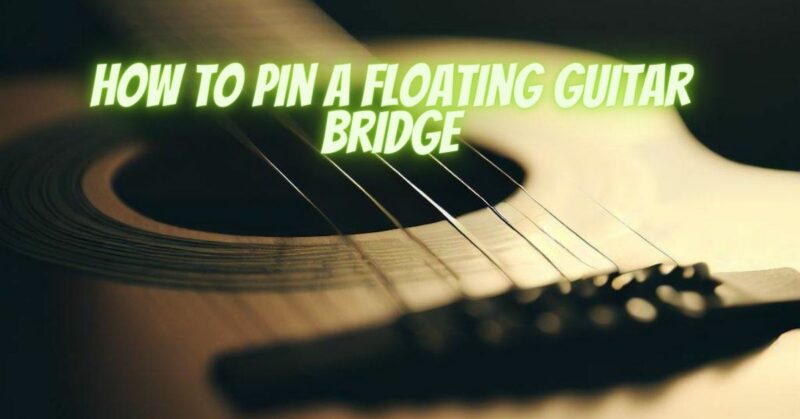A floating guitar bridge is a type of bridge that allows the strings to move independently of the body of the guitar. This can be used to create a variety of sounds, such as vibrato and bending. However, a floating bridge can also be unstable and can go out of tune easily. Pinning a floating bridge can help to improve its stability and prevent it from going out of tune.
Here are the steps on how to pin a floating guitar bridge:
- Remove the strings. This will make it easier to access the bridge.
- Identify the pins. The pins are typically located on the underside of the bridge. They are small, metal rods that are inserted into the bridge and body of the guitar.
- Insert the pins. Use a screwdriver or Allen wrench to insert the pins into the bridge and body of the guitar. Make sure that the pins are inserted all the way.
- Reinstall the strings. Tune the strings to pitch.
Here are some additional tips:
- Use the correct size pins. The pins should be the same size as the holes in the bridge and body of the guitar.
- Be careful not to over-tighten the pins. Over-tightening the pins can damage the bridge.
- If you are not comfortable pinning a floating bridge yourself, it is best to take your guitar to a qualified guitar technician. They will be able to pin the bridge correctly and ensure that your guitar is in good playing condition.
Here are some safety precautions to take when pinning a floating bridge:
- Make sure that the guitar is unplugged. This will prevent you from getting shocked.
- Be careful not to over-tighten the pins. This can damage the bridge.
- Use the correct tools for the job. A screwdriver or Allen wrench will be needed to insert the pins.
- Be patient and take your time. It is important to get the pins inserted correctly.


